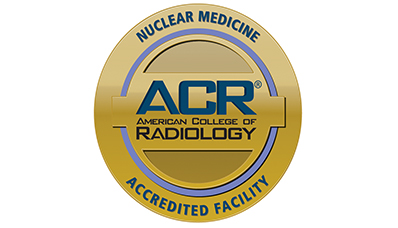Nuclear Medicine
Nuclear Medicine consists of both diagnostic and therapeutic procedures. Nuclear medicine diagnostic tests use small amounts of different radioactive tracers in order to determine the function of the heart, lungs, thyroid, kidneys, gallbladder, liver, and brain. A special gamma camera detects the radioactive emissions from these organs and sends the signals to a computer that creates two- and three-dimensional images. This process is referred to as Single Photon Emission Computerized Tomography (SPECT). SPECT is different from CT scans because it shows the chemical and physiological processes of the organs.
Our VERTEX scanner, allowing physicians to accurately diagnose abnormalities early in the progression of a disease, offers nuclear medicine capabilities that surpass standard diagnostic tools.
Scans available:
Bone
Thyroid
Renal
Lung
MUGA
SPECT
Hepatobiliary
Gallium
Myocardial perfusion



